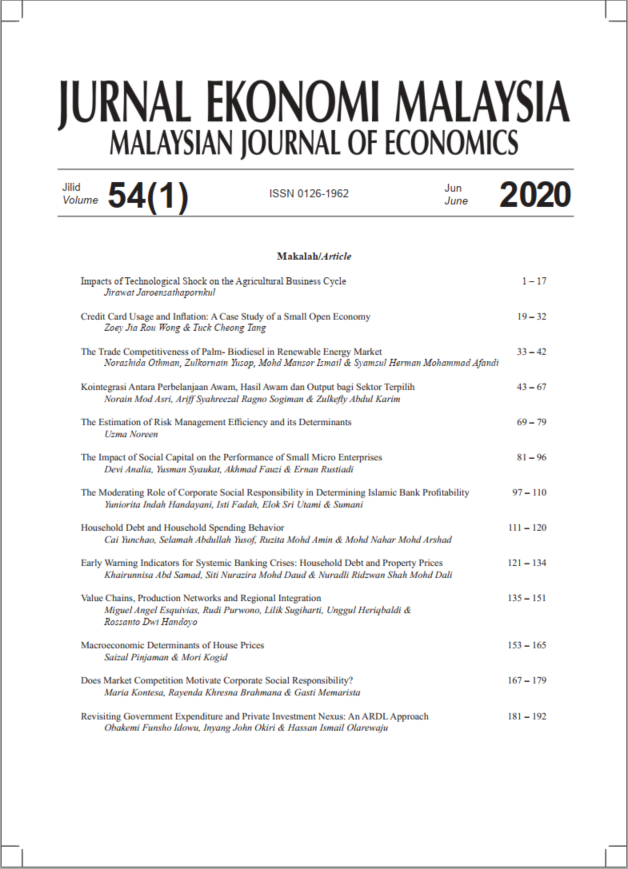Jurnal Ekonomi Malaysia
54 (1) 2020 135 – 151
Department of Economics
Faculty of Economics and Business
Universitas Airlangga Surabaya
INDONESIA
Faculty of Economics and Business
Universitas Airlangga Surabaya
INDONESIA
Faculty of Economics and Business
Universitas Airlangga Surabaya
INDONESIA
Faculty of Economics and Business
Universitas Airlangga Surabaya
INDONESIA
Faculty of Economics and Business
Universitas Airlangga Surabaya
INDONESIA
Abstract
This study analyses the development of Indonesia within the Global Value Chain (GVC) and the transformation in its pattern of trade as a result of broader regional integration and more active participation within fragmented production networks. By employing an Inter-Country Input-Output model covering 64 countries and 34 different sectors, this study measures the integration of Indonesia within the Global Value Chain by breaking down its gross exports into components of value-added, covering the period of 1995 to 2015. The involvement of Indonesia within the GVC is analyzed through a set of indicators derived from a decomposition of the Leontief Input-Output system that completely splits gross exports into components of value-added. The system allows for differentiating value-added exports through intermediate inputs or final products, as well as direct exports, and indirect ones. The value-added components help to measure multiple-cross-border trade, domestic value, and foreign value embedded in exports, as well as to track how value-added travels across regional and global chains. The results indicate that Indonesian value-added exports expanded by more than 300% from 1995 to 2011, suggesting a change in the pattern of growth as the trade focus was re-directed towards Asian partners, mainly to specific sectors in East Asia: within mining (33% of the increase) and within manufacturing (41% of growth). Indonesia shifted towards exports of intermediate inputs within the initial section of the GVC. A substantial share of value-added goods traveled via regional partners towards international markets, although most of the domestic value-added remained in Asia. Indonesia differs from its ASEAN partners as it incorporates larger shares of domestic value-added in its exports than they do; it has a stronger role than they in exports of intermediate goods; it is more oriented towards regional partners; and has a lower presence than others within high technological exports.
Keywords
Bibliography
@article{purwono2020value,
title={Value Chains, Production Networks and Regional Integration: The Case of Indonesia},
author={Esquivias, Miguel Angel and Purwono, Rudi and Sugiharti, Lilik and Heriqbaldi, Unggul and Handoyo, Rossanto Dwi},
journal={Jurnal Ekonomi Malaysia},
volume={54},
number={1},
pages={135—151},
}
Receive updates when new articles are published.


